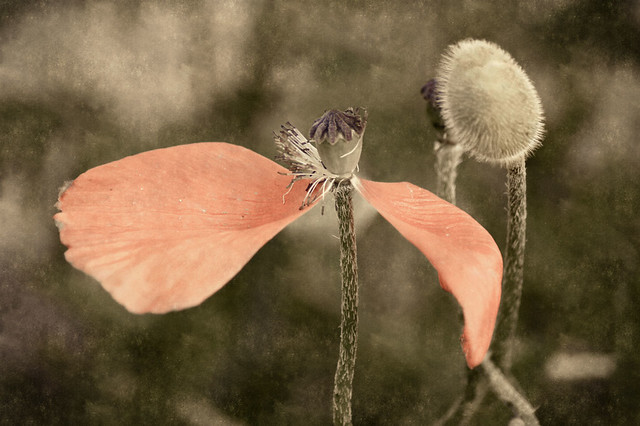Spring
Angel’s Wings

This female Ruby-throated hummingbird was keeping an eye on me as I took her profile portrait.
Three things I love about this shot. 1) The sharp detail in the bird’s head. 2) The ghost-like blurring of the wings. 3) The little feathers on the neck that look like flecks of gold.
To see more of the detail, click the photo.
Boastful

This male, Ruby-throated hummingbird was showing off for me. I love it when the light hits their gorget just right and you get a flash of that iridescent, ruby-red color they derive their name from.
For bonus points…
gor·get (gôrjt)
n.
1. A piece of armor protecting the throat.
2. An ornamental collar.
3. The scarflike part of a wimple covering the neck and shoulders.
4. A band or patch of distinctive color on the throat of an animal, especially an area of brightly colored feathers on the throat of a bird.
Click on the image to see a larger image and those brightly colored feathers on the throat in greater detail.
Popular Spot

Flowers are blooming and the bees are buzzing. This proved to be a popular spot in the meadow. Honey bees and bumble bees were frequenting this clump of purple spiderswort. It was early morning – maybe 6:30 (notice the dew still on the plants) – and they were already hard at it.
To get this shot, I put my camera on a tripod and simply focused on a colorful, well lit clump of flowers and waited. When a bee would enter into the scene, I would start clicking. The bees you see here are exactly how I photographed them…but they were never in the shot together. Since the focus and framing never changed, it was easy to combine the various bees from separate images into one.
To get a better view of the image details, click on it and a larger version will open in another tab.
Bold and Beautiful

These bold, big-as-all-outdoors flowers remind me of purple cone flowers. I’m not sure they are cone flowers because the petals don’t slope downward. I’m not an expert, I just appreciate the beauty.
These beauties were photographed in the center of the circular entrance to the Kraft Building at the Green Lake Conference Center, Green Lake, Wisconsin.
To see a larger version, click on the photo.
Garden Party

I went to a garden party to reminisce with my old friends
A chance to share old memories and play our songs again
Rick Nelson
These are the some of the regulars who frequent the birdbath and feeders in our yard. The yellow ones are male American Goldfinches. The other three are House Finches – the males having the red coloring.
In the interest of full disclosure – I never got more than three of them to belly up to the bar at one time, so a little Pops Digital magic was needed to fill up the spaces.
To get a better view, click on the image and you’ll see a larger version.
Unassuming Charm
Trouble Times Three

Here’s a gang of tough looking hombres if I ever saw one. These young roughians from the neighborhood (Eastern Bluebirds hatched this spring) seem to be displaying a bit of youthful defiance.
Because this photo was taken on a cloudy day, from a distance, it lacks the technical photographic quality I prefer. However, catching the three of them together…with that look…makes this an image worth posting.
On A Pedestal
Poppy Progression
Poppies are some of my favorites. The colors are always vibrant, the multi-layer petals are interesting and the center provides a natural focal point.
This photo shows the poppies in three stages – the pre-bloom bud, the bud just beginning to burst forth, and full, glorious bloom.
If you have a large monitor, you may be able to view a larger version of this photo by clicking on it. To see other, previously posted poppy images, click HERE.
Beauty Fades

By plucking her petals, you do not gather the beauty of the flower. ~ Rabindranath Tagore
This is one of the first poppies to bloom and fade in our spring garden. I applied a texture to the image. To me, it didn’t seem right to gaze upon its unfiltered demise.
Click the photo to view a larger version of this image.










































